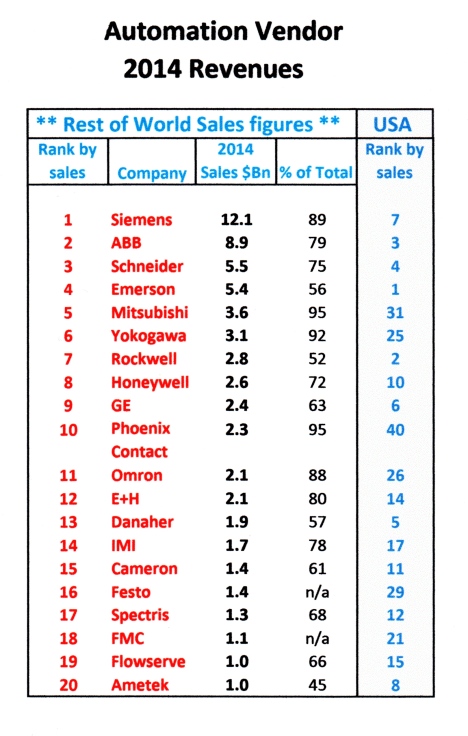
The QEWC Ras Abu Fontas plant
A press release this week from Yokogawa announces that the Yokogawa South Korean engineering operation has won another major contract from Samsung C&T for Centum VP control and ProSafe-RS safety systems for a 2.4GW Combined Cycle gas turbine power and desalination plant. The plant is to be built in Qatar, using local natural gas as the fuel, and will make up an important part of the future Qatari infra-structure: it will be located 20km south of Doha. It will be operated by Umm Al Houl Power, a joint venture consortium which includes Mitsubishi/Tokyo Electric Power and Qatar Petroleum, the Qatar Foundation, and the Qatar Electricity and Water Company (QEWC).
Another order from Acciona Agua covers the supply of an associated Yokogawa Centum VP control system for a reverse osmosis water desalination plant to be created as a part of the power plant. Separately, Yokogawa received an order placed by Hitachi Zosen Corporation for a Centum VP control system on a further multi-stage flash desalination plant. Combined, the two desalination plants will produce 590,000 cubic meters of water per day.
Yokogawa will be responsible for the engineering of these interlinked systems, which will be able to monitor and control the operations of all three plants: plus they will provide support for installation and commissioning.
Yokogawa Experience
Yokogawa in South Korea has developed extensive expertise in working alongside Korean and Japanese power plant contractors, and claims a solid global track record in executing large CCGT projects, based on over 100 systems for combined cycle power plants. This capability was demonstrated in Qatar on a previous desalination plant for QEWC, known as the Ras Abu Fontas A2 project, and previous CCGT projects alongside Samsung C&T have included a 2.1GW plant at Rabigh on Saudi Arabia’s Red Sea coast.
Yokogawa anticipates major growth in demand for CCGT plants worldwide, particularly where there is access to local supplies of natural gas. However, some recent projects have been more unconventional, with a recent installation in Ireland using a high speed controller to manage a fly-wheel energy storage system for smoothing the output power from wind farms! Another project in Cornwall, UK, will use Centum VP and ProSafe-RS to control the boilers and auxiliary systems on a waste to energy plant, their fourth such installation in the UK.
(c) Nick Denbow: www.ProcessingTalk.info
@Processingtalk
Filed under: Application story, automation systems, Control systems, Oil and Gas Industry, Power industry news, Uncategorized, Water treatment | Leave a comment »






 Things must be bad in process automation and control: most of the major suppliers involved with the oil industry cancelled or reduced their plans for any entertainment of UK magazine editors this year. But a notable exception was Rockwell Automation! Their get-together and lunch for Editors at the Café Royal on Regent Street was therefore much appreciated, and a memorable opportunity to hear what they have been doing. Plus it was a major opportunity for the Editors to catch up with one another to review industry developments!
Things must be bad in process automation and control: most of the major suppliers involved with the oil industry cancelled or reduced their plans for any entertainment of UK magazine editors this year. But a notable exception was Rockwell Automation! Their get-together and lunch for Editors at the Café Royal on Regent Street was therefore much appreciated, and a memorable opportunity to hear what they have been doing. Plus it was a major opportunity for the Editors to catch up with one another to review industry developments! David Nicholl, the new Country Director for RA in the UK, joined Rockwell from Schneider Electric back in May. He commented that RA have benefited from their automation product spread across all industries, and so is not as affected by the problems caused by the low price of oil as other suppliers. Rockwell has had a good year particularly in Food and Beverage, but also they have found a niche for other industries ‘On-shoring’, bringing manufacturing back into the UK, and providing customised, safe and secure production. Industries also high on Rockwell’s customer list this year have been Water, and Pharmaceuticals, where traceability has been a major feature.
David Nicholl, the new Country Director for RA in the UK, joined Rockwell from Schneider Electric back in May. He commented that RA have benefited from their automation product spread across all industries, and so is not as affected by the problems caused by the low price of oil as other suppliers. Rockwell has had a good year particularly in Food and Beverage, but also they have found a niche for other industries ‘On-shoring’, bringing manufacturing back into the UK, and providing customised, safe and secure production. Industries also high on Rockwell’s customer list this year have been Water, and Pharmaceuticals, where traceability has been a major feature.